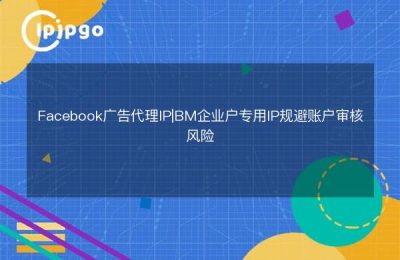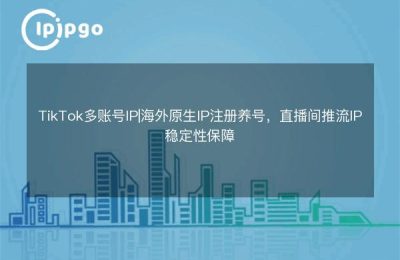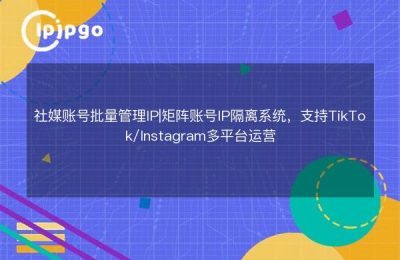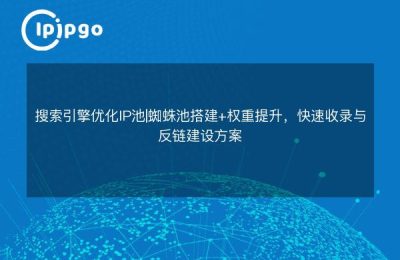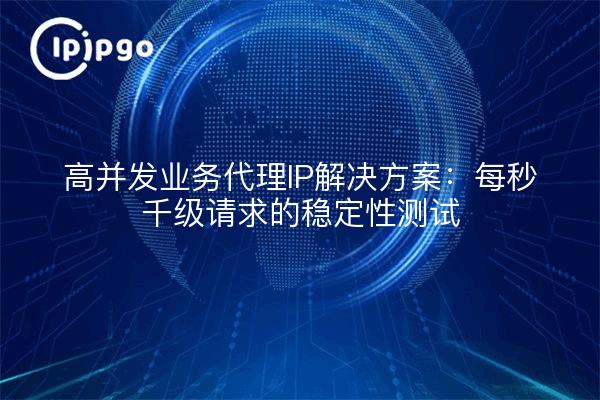
Imagine double eleven zero point shopping scene, when 100,000 users click "buy now", your proxy IP is like a highway toll station - if the gate is stuck for 1 second, the whole system will be paralyzed. In this article, we will use real cases to dismantle how to realize the stability guarantee of processing thousands of requests per second through professional proxy IP services.
I. Three Death Traps for Highly Concurrent Businesses
Tech teams who have experienced e-commerce sales know that the following three scenarios are most likely to result in system crashes:
| Achilles' heel | concrete expression | Proxy IP Response Program |
|---|---|---|
| IP collective failure | 500 simultaneous requests to trigger a block on the target site | Intelligent fuse switching mechanism |
| Response time spikes | Average latency spikes from 50ms to 2000ms | BGP Multi-Line Intelligent Scheduling |
| resource leakage | Unreleased connections eat up server memory | Automatic Recycling Inspection System |
A cross-border e-commerce customer served by ipipgo, for example, will trigger the wind control when using the traditional proxy at 800 requests per second, and after switching to ipipgo's dynamic residential IP, it successfully breaks through 3200 requests per second and maintains the success rate of 98%.
Second, four steps to build stability testing system
Step 1: Establishment of a baseline
Test the initial state of 100 IPs in bulk with the curl command:
for ip in $(cat iplist.txt); do curl -x http://$ip -I https://target.com -m 3; done
Record first time connection success rate, ipipgo residential IPs usually achieve 99% or more availability.
Step 2: Pressure waveform simulation
Use JMeter to set up three pressure models:
- Pulse type: 0-1000 requests/second instantaneous bursts
- Sawtooth: 300-1500 requests/second periodic fluctuations
- Plateau type: 1200 requests/second sustained
Observe how the ipipgo intelligent scheduling system automatically balances IP resources in different regions.
Step 3: Exception Injection Testing
Three types of faults are randomly created under sustained pressure:
1. Reconnect after 30 seconds of sudden disconnection
2. Single-node CPU usage soars to 90%
3. Analog 10% IP burst failure
Monitor the system's self-healing time and percentage of failed requests; quality agents should recover within 20 seconds.
Step 4: 72-hour endurance run
Run for three consecutive days of observation:
- Smooth IP pool expansion and contraction
- Whether the average delay fluctuation is <15%
- Whether the memory footprint grows linearly
ipipgo has helped a financial platform achieve 82 hours of uninterrupted operation, with memory leakage controlled to less than 3MB per day.
III. Core technologies of the ipipgo high concurrency program
1. Cellular node layout
Deployment of residential IP nodes in 240 locations worldwide, similar to a mobile base station layout:
- Core city node density >50/km2
- Automatic avoidance of data center clusters
- Real-time monitoring of base station load status
2. Quantum rotation algorithm
Unlike traditional sequential switching, using:
- Assign IP based on feature hash of request content
- Failed IPs enter cooling queue gradient resurrection
- Dynamic weight adjustment enabled for popular regional IPs
Increases IP utilization by 40% and extends lifecycle by 3X.
3. Full stack optimization
Automatically match protocols for different business types:
| panic buying by e-commerce merchants | HTTP/1.1+ Connection Multiplexing |
| real time bidding (RTF) | WebSocket long connection |
| data acquisition | HTTP/2 multiplexing |
IV. Frequently asked questions
Q: How to determine the real carrying capacity of the proxy IP pool?
A: The three-step verification method is recommended:
1. Sudden increase of 3001 TP3T concurrency to observe the response time curve
2. Failure rate to maintain peak pressure for a period of 1 hour
3. Check whether the heat map of IP geographical distribution is balanced or not
ipipgo supports a real-time view of the load status of each node.
Q: What should I do if I encounter a regional IP ban?
A: Immediate implementation of the emergency triple axe:
1. Activation of alternate geospheres (e.g., North America → Europe)
2. Switch to hybrid residential IP and data center IP mode
3. Enabling request feature obfuscation
ipipgo's smart routing can switch in less than 5 seconds.
Q: How to use dynamic IP and static IP together?
A: A "pyramid model" is recommended:
- The underlying 70% dynamic IP takes on regular requests
- Mid-tier 25% static IP to maintain core business connectivity
- Top-level 5% Dedicated IP for critical operations such as payments
The ipipgo console supports one-click configuration of proportionality policies.
Through professional proxy IP services and scientific testing methods, enterprises can completely break through the technical bottleneck of highly concurrent business. ipipgo, as the world's leading proxy IP service provider, with 90 million + real residential IP resources and intelligent scheduling system, has helped hundreds of enterprises to achieve stable support for 10,000 requests per second, click on the official website to get a customized solution immediately.

